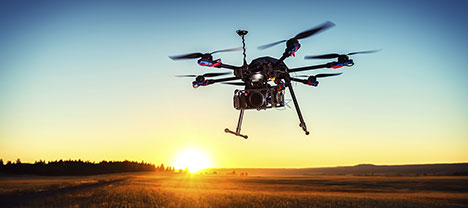
Nov. 9, 2017
Business aviation stakeholders must sign up by Nov. 28 if they wish to participate in a new collaborative program exploring local concepts to assist the FAA with integrating unmanned aircraft systems (UAS) into the National Airspace System.
Announced last month by U.S. DOT Secretary Elaine Chao, the three-year UAS Integration Pilot Program (UAS IPP) allows private stakeholders to partner with public entities (such as state, local and tribal governments) to address technical, regulatory and policy challenges in scenarios that fall outside the scope of regulations defined under FAR Part 107, which governs commercial use of small UAS.
NBAA has long been a leading advocate for the development of sensible regulatory policies governing commercial UAS operations. Heidi Williams, NBAA’s director for air traffic services and infrastructure, emphasized that the association will closely monitor the integration program’s development. “We intend to be an active part of this process as it moves forward,” she said. “We must ensure the interests and concerns of our members and other UAS stakeholders receive proper consideration, with a continued emphasis on safe integration of UAS into airspace shared with manned aircraft.”
While only public entities may serve as lead applicants under terms of the program, private stakeholders wishing to partner with a public entity are encouraged to submit comments prior to Nov. 28. Those candidates will then be granted access to a dedicated Facebook page expected to be established soon to help match private entities with lead applicants.
“This is a very tight timeframe, but it’s also an opportunity for NBAA members to express their intent to participate in the program,” said Williams. “They must get their foot in the door now to be part of the subsequent process.”
After declaring their intent to participate, established public/private partnerships will have until Jan. 4 to provide detailed summaries of their planned research, such as establishing proposed guidelines for nighttime or beyond visual line-of-sight UAS operations. The DOT will then have 120 days to select at least five partnerships to further develop their recommendations, including proposed strategies to gain regulatory approval, with the FAA providing guidance and oversight of the process.
Announced Oct. 25, the UAS IPP appears to have already attracted a high level of interest from UAS stakeholders, with FAA UAS Integration Office Director Earl Lawrence citing more than 600 initial messages received through Nov. 7.


 International Business Aviation Council Ltd.
International Business Aviation Council Ltd.